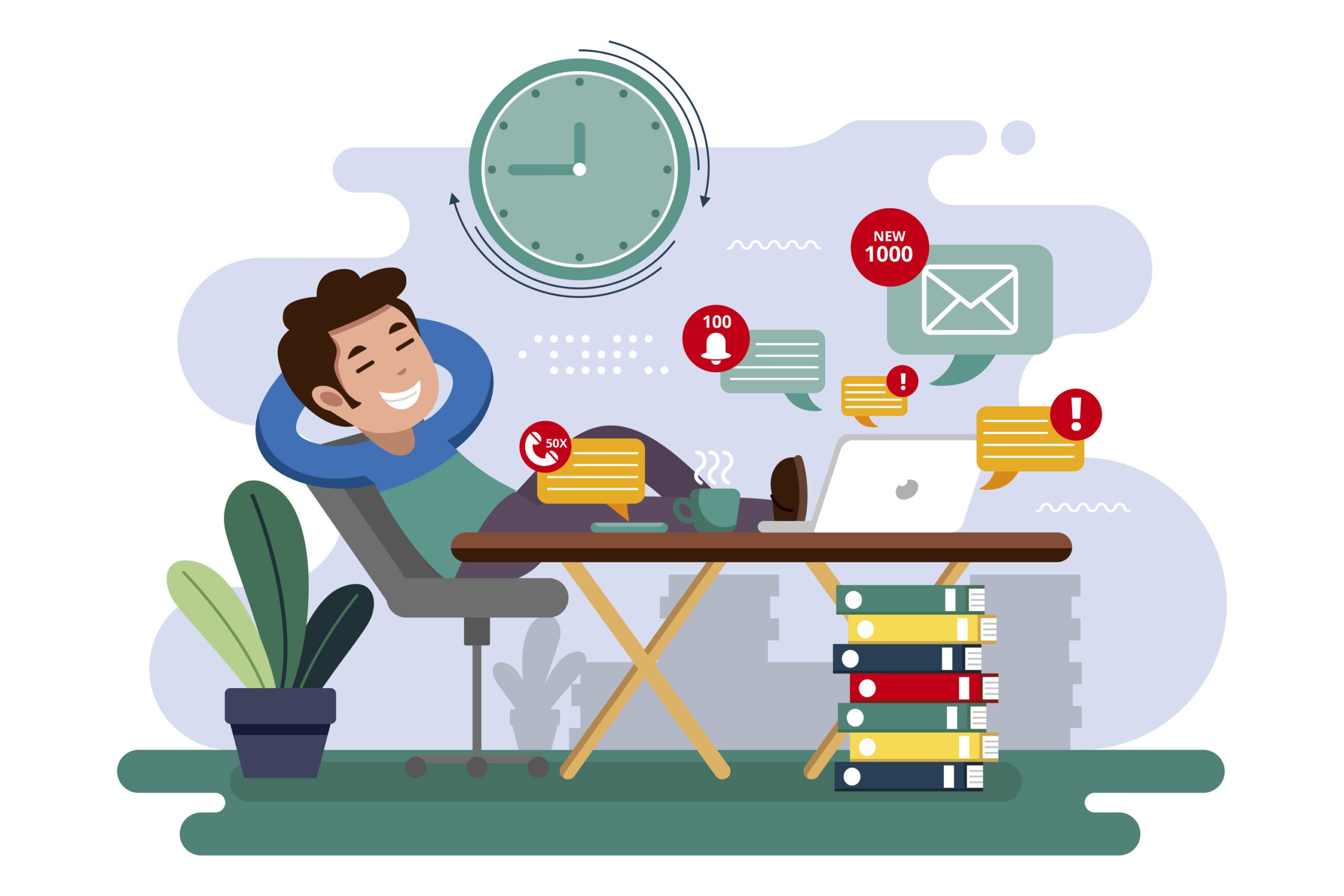Professionalism is the backbone of any successful organization. It fosters respect, trust, and collaboration, ensuring that all team members work harmoniously towards common goals. However, when professionalism is compromised, it can lead to a toxic work environment, decreased productivity, and high employee turnover. In this blog, we will explore five common unprofessional behaviors exhibited by both employees and employers, their negative impacts on the workplace, and strategies to address them effectively.
 1. Poor Communication: The Root of Workplace Confusion
1. Poor Communication: The Root of Workplace Confusion
“The art of communication is the language of leadership.” — James Humes
Communication is the cornerstone of any functioning organization. When communication falters, it can lead to confusion, mistakes, and a breakdown in team collaboration. Poor communication in the workplace can manifest in various ways, such as failing to provide clear directions, inconsistent communication of policies, and a lack of timely information. This behavior can be detrimental to the smooth operation of any business.
Managers often must communicate their expectations, leading to employee misunderstandings of tasks or priorities. Policies and procedures are inconsistently communicated, leaving employees unsure of what is expected of them. Critical updates or changes in the organization are often relayed too late, causing unnecessary delays and errors. Poor communication can result in confusion, mistakes, and decreased productivity. When employees don’t receive the information they need to perform their jobs effectively, they may feel frustrated. Over time, this can lead to decreased morale, increased stress, and even conflict within teams.
Strategies to Improve Communication:
Establish Clear Channels: Ensure that all communication channels are clearly defined, and encourage their consistent use across the organization.
Provide Regular Updates: Keep employees informed about any changes or important updates promptly.
Encourage Feedback: Create a culture where employees feel comfortable providing feedback and asking for clarification when needed.
Training: Invest in communication skills training for both managers and employees to enhance their ability to convey information effectively.
2. Micromanaging: The Enemy of Trust and Autonomy
Micromanaging occurs when supervisors excessively control or monitor the tasks and activities of their employees. While managers need to oversee their team’s work, taking control to an extreme can be detrimental. Micromanaging stifles creativity, hinders decision-making abilities, and creates an atmosphere of distrust.
A manager constantly checks in on an employee’s work, demanding updates on minor details. Supervisors who fail to delegate tasks appropriately, insist on controlling every aspect of a project. Employees feel they have no autonomy in their roles, with every decision needing approval.
Micromanaging can lead to frustration among employees, who may feel that their skills and judgment are not trusted. This behavior can cause high levels of stress, reduced job satisfaction, and eventually lead to higher turnover rates as employees seek a more supportive work environment.
Strategies to Combat Micromanaging:
Empower Employees: Encourage employees to take ownership of their tasks and make decisions within their scope of work.
Set Clear Expectations: Define clear goals and expectations, allowing employees the freedom to determine how best to achieve them.
Provide Support, Not Control: Offer guidance and support without overstepping into micromanagement. Trust your team to deliver results.
Regular Check-ins: Schedule regular, but not overly frequent, check-ins to discuss progress and address any concerns without micromanaging.
3. Lack of Recognition: Undermining Employee Motivation
 Recognition is a powerful motivator in the workplace. When employees’ efforts and achievements go unnoticed, it can lead to a significant drop in morale and motivation. Unfortunately, many organizations overlook the importance of recognizing and rewarding good performance, which can lead to disengagement and dissatisfaction among employees. Managers fail to acknowledge the completion of challenging projects, and employees’ contributions are being overlooked, with the focus always on what needs to be done next. There is a lack of formal recognition programs, such as employee of the month awards, bonuses, or even simple verbal praise. Without recognition, employees may feel undervalued and unappreciated, leading to disengagement and a lack of motivation. Over time, this can result in decreased productivity, lower job satisfaction, and an increased likelihood of employees seeking opportunities elsewhere.
Recognition is a powerful motivator in the workplace. When employees’ efforts and achievements go unnoticed, it can lead to a significant drop in morale and motivation. Unfortunately, many organizations overlook the importance of recognizing and rewarding good performance, which can lead to disengagement and dissatisfaction among employees. Managers fail to acknowledge the completion of challenging projects, and employees’ contributions are being overlooked, with the focus always on what needs to be done next. There is a lack of formal recognition programs, such as employee of the month awards, bonuses, or even simple verbal praise. Without recognition, employees may feel undervalued and unappreciated, leading to disengagement and a lack of motivation. Over time, this can result in decreased productivity, lower job satisfaction, and an increased likelihood of employees seeking opportunities elsewhere.
Strategies to Improve Recognition:
Implement Recognition Programs: Establish formal recognition programs that reward employees for their hard work and achievements.
Celebrate Successes: Take the time to celebrate both individual and team successes, no matter how small.
Provide Immediate Feedback: Offer immediate, positive feedback when employees perform well, reinforcing their efforts.
Encourage Peer Recognition: Promote a culture where employees can recognize and appreciate each other’s contributions.
4. Unprofessional Behavior: Toxic Attitudes and Actions
Unprofessional behavior in the workplace encompasses a range of actions that can negatively affect the work environment. This includes gossiping, disrespectful communication, discriminatory behavior, and lack of punctuality. Such behaviors not only disrupt the harmony of the workplace but can also lead to legal issues if left unchecked.
Spreading rumors or engaging in office gossip, can create a toxic work environment. Disrespecting colleagues or supervisors, whether through dismissive language, interrupting, or ignoring input. Consistently arriving late to work or meetings, showing a lack of respect for others’ time.
Toxic behaviors can erode trust, increase conflict, and create a hostile work environment. This can lead to reduced collaboration, lower morale, and increased employee turnover. In severe cases, it can also result in legal consequences for the organization.
Strategies to Address Unprofessional Behavior:
Set Clear Expectations: Communicate the organization’s expectations regarding professional behavior and the consequences of unprofessional actions.
Lead by Example: Ensure that leaders and managers model the behavior they expect from their teams.
Address Issues Promptly: Deal with unprofessional behavior as soon as it arises, before it has the chance to escalate.
Provide Training: Offer training on workplace ethics, communication, and conflict resolution to help employees understand and adhere to professional standards.
5. Neglecting Employee Professional Growth: Stifling Potential

One of the most important aspects of maintaining a motivated and engaged workforce is providing opportunities for professional growth. When employers neglect to support their employees’ learning and development, it can lead to stagnation, decreased job satisfaction, and the potential loss of talented individuals seeking growth elsewhere.
Lack of training programs or workshops to help employees develop new skills support or encouragement for employees to pursue further education or certifications.Overlooking employees’ professional goals during performance reviews or career planning sessions.
Employees who feel that they are not growing or advancing in their careers may become disengaged and dissatisfied with their roles. This can lead to decreased productivity and an increased likelihood of employees leaving the organization to seek growth opportunities elsewhere.
Strategies to Foster Professional Growth:
Offer Training and Development: Provide regular training sessions, workshops, and opportunities for further education to help employees enhance their skills.
Support Career Advancement: Encourage employees to pursue career advancement within the organization by offering mentorship programs and clear career paths.
Align Goals: Regularly discuss employees’ professional goals during performance reviews and work together to create a plan for achieving them.
Invest in Learning Resources: Provide access to learning resources such as online courses, books, and seminars to encourage continuous learning.
Conclusion: Fostering a Professional and Respectful Workplace
“A healthy workplace culture fosters an environment where people feel respected, valued, and motivated.” — Unknown
Unprofessional behavior, whether from employees or employers, can severely impact the workplace. Organizations need to address these issues proactively through clear policies, open communication, and a culture of respect. By fostering a professional environment and encouraging positive behaviors, both employees and employers can contribute to a workplace that is productive, collaborative, and supportive.
Creating a professional workplace is an ongoing process that requires commitment from all levels of the organization. By recognizing and addressing unprofessional behaviors, companies can build a work culture that not only achieves business success but also supports the well-being and growth of its people.
















































 In conclusion, it is clear that success requires a combination of planning, self-awareness, support systems, integrity and adaptability to reach one’s goals. Taking the time to reflect on personal strengths and weaknesses as well as seeking out mentors who can provide valuable advice are important steps in this process. Additionally, maintaining relationships with those who motivate and inspire you while keeping an open mind towards different approaches or ideas will prove beneficial in achieving desired outcomes. Finally, having fun and enjoying the journey is just as essential; taking breaks for oneself to relax or engage in activities that bring joy will help keep morale high even during times of difficulty or failure! While there are no guarantees when striving for success, following these guidelines should set anyone up for their best chance at reaching their objectives. So take a deep breath–and go make your dreams come true!
In conclusion, it is clear that success requires a combination of planning, self-awareness, support systems, integrity and adaptability to reach one’s goals. Taking the time to reflect on personal strengths and weaknesses as well as seeking out mentors who can provide valuable advice are important steps in this process. Additionally, maintaining relationships with those who motivate and inspire you while keeping an open mind towards different approaches or ideas will prove beneficial in achieving desired outcomes. Finally, having fun and enjoying the journey is just as essential; taking breaks for oneself to relax or engage in activities that bring joy will help keep morale high even during times of difficulty or failure! While there are no guarantees when striving for success, following these guidelines should set anyone up for their best chance at reaching their objectives. So take a deep breath–and go make your dreams come true!